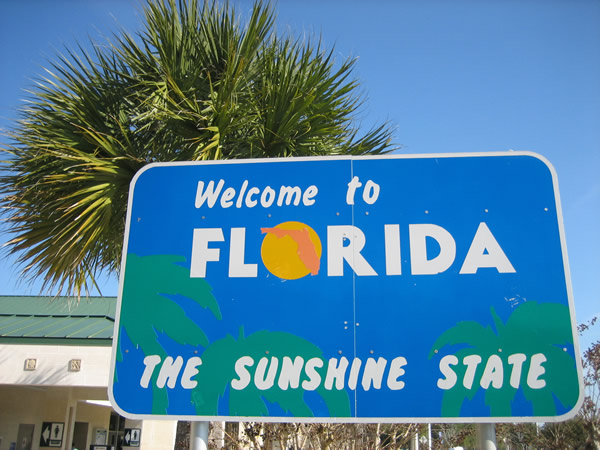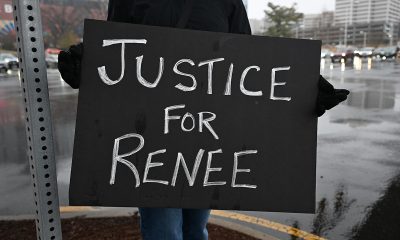a&e features
Pop culture countdown: Iconic and ignominious
A ‘Schock’-ing year for queer pop culture, from holiday rom-coms to COVID disruptions
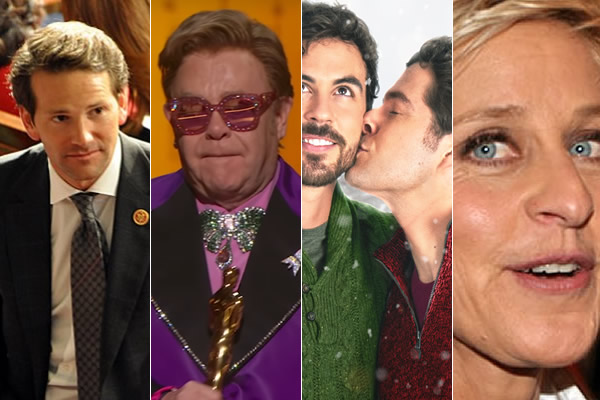
Hollywood was not immune to the COVID-19 pandemic, which caused studios to postpone major releases and to rethink how it does business. Here are the Blade’s top 10 stories in arts and entertainment for 2020.
10: Father knows best
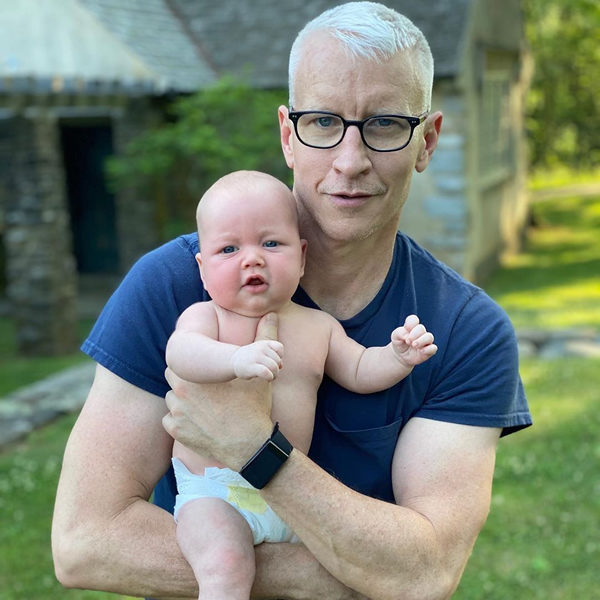
Out CNN anchor Anderson Cooper announced on the air April 30 that his son Wyatt Morgan was born on April 27.
“I am beyond happy,” he told People Magazine.
Cooper, 53, host of CNN’s “Anderson Cooper 360,” named the baby, born via a surrogate, after his father, Wyatt, who died when Cooper was 10 days old. Cooper’s mother was the late Gloria Vanderbilt, who died last year at 95.
Cooper, who finally came out in 2012 after years of speculation, plans to co-raise the baby with his ex, Benjamin Maisani, according to various sources. They broke up in 2018.
9: Pride goes global
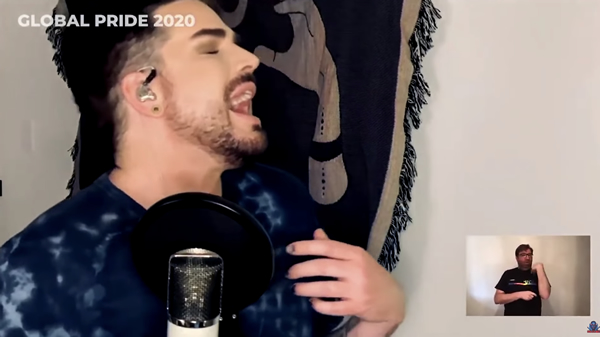
Stymied by COVID-19 restrictions on their usual events, Pride organizers around the world united for Global Pride, an online event on June 27 organized by InterPride and the European Pride Organizers Association.
Performers included Olivia Newton-John, Deborah Cox, Kristine W, Thelma Houston, Steve Grand, the Chicks and more. Manvendra Singh Gohil, a gay Indian prince, was among the speakers.
The theme was “exist, persist, resist” and about 57 million watched the 24-hour virtual event. Todrick Hall hosted. Adam Lambert performed “Mad World.”
8: Hardly Schock-ing
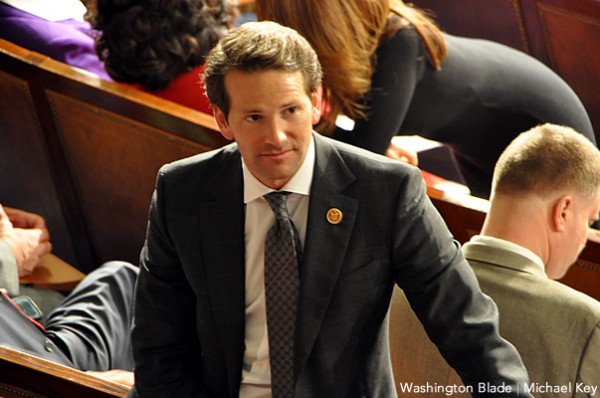
After years of speculation, former U.S. Rep. Aaron Schock (R-Ill.), came out as gay and was not exactly welcomed into the LGBTQ world.
Schock, 39, was elected to Congress at age 27 in 2008 and was once seen as a rising star in the GOP. He resigned in 2015 amid criticism for lavish spending including a redecorating effort of his Capitol Hill office. He was indicted by a federal grand jury in 2016 on 24 counts including wire fraud and theft of government funds but federal prosecutors reached an agreement in 2019 and charges were dropped. Schock vowed to pay back taxes and reimburse his campaign.
Schock, a gym rat almost as famous for his thirsty shirtless pics as his political career, came out in a March 5 blog on his website aschock.net that began simply “I am gay.” He maintains his innocence, said he regrets not coming out sooner but said he assumed his constituents knowing would “not go over well.”
“I also, in retrospect, realize that I was just looking for more excuses to buy time and avoid being the person I’ve always been,” he wrote.
He did not apologize for his anti-gay voting record which included votes against same-sex marriage and the repeal of “Don’t Ask, Don’t Tell.” He had a zero rating from HRC. He did say he’d support LGBT rights “in every way I could” if he were still in Congress.
Reaction was largely negative. Gays as varied as “Queer Eye’s” Jonathan Van Ness to Michelangelo Signorile called him out for hypocrisy.
7: Ho-hum Oscars
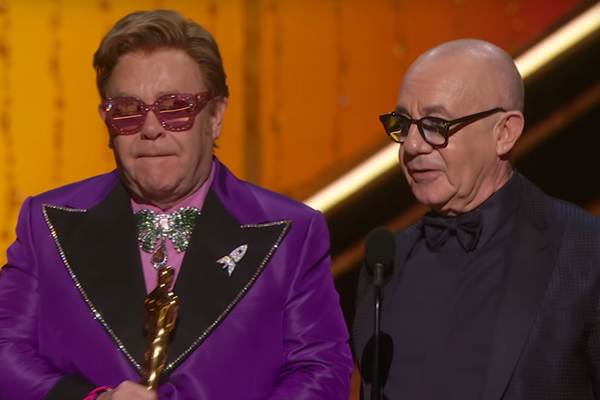
The 92nd Academy Awards were one of the last major events to unfold as usual before COVID restrictions kicked into high gear. Held Feb. 9 in Hollywood, it wasn’t a particularly strong year for LGBT themes. “Parasite” took the top prize and “Joker,” Joaquin Phoenix’s tour de force, had the most nominations. “1917,” “Ford v. Ferrari” and “Once Upon a Time in Hollywood” also won multiple awards.
Of the 20 acting nominees, none were LGBT although two played LGBT characters. “Pain and Glory,” from out director Pedro Almodovar, snagged two nominations.
“If 2019’s record year of inclusion for LGBTQ and LGBTQ-themed nominees was a small step forward … then nominations for Oscar 2020 are a giant lap back,” wrote Blade critic John Paul King.
It was slightly gayer at the ceremony itself. Janelle Monae and Billy Porter performed in the opening. Elton John won Best Original Song with longtime collaborator Bernie Taupin for “(I‘m Gonna) Love Me Again,” from his biopic “Rocketman.”
6: Rom-com representation

We may have been largely a bust at the Oscars, but in other branches of filmdom, there were major surprises. The New York Times rounded up six holiday-themed gay rom-coms with out with LGBT characters.
Kristen Stewart and Mackenzie Davis starred in the Clea DuVall-helmed (DuVall is gay) lesbian coming-out comedy “Happiest Season,” which premiered on Hulu on Thanksgiving Day.
Brandon and Jake race to adopt a baby by Christmas in “The Christmas House” on the Hallmark channel. Real-life husbands Ben Lewis and Blake Lee star in “The Christmas Setup” on Lifetime, “Dashing in December” is a drama from Paramount about two men who fall in love on a ranch while Netflix has “A New York Christmas Wedding” with a bi woman in the lead and “I Hate New Year’s,” an on-demand lesbian romance set in Nashville.
Complete with same-sex kisses (!), the Times calls the deluge “a sea change for Christmas cinema, a conventionally heterosexual universe with more stories about puppies than gay people.”
5: Elliot’s new day
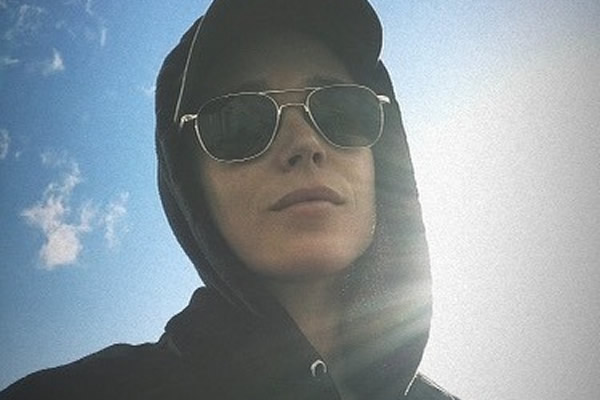
Elliot Page, a Canadian actor and producer known for roles in TV shows “Pit Pony,” “Trailer Park Boys,” “ReGenesis” as well as the 2005 film “Hard Candy,” came out as transgender last month.
He’d come out as a gay woman in February 2014. Page was nominated for an Oscar in 2008 for his role in “Juno” and is also the star of Netflix’s “The Umbrella Academy.”
“Hi friends, I want to share with you that I am trans, my pronouns are he/they and my name is Elliot. I feel lucky to be writing this. To be here. To have arrived at this place in my life. I feel overwhelming gratitude for the incredible people who have supported me along this journey,” he wrote.
4: Queer streaming galore
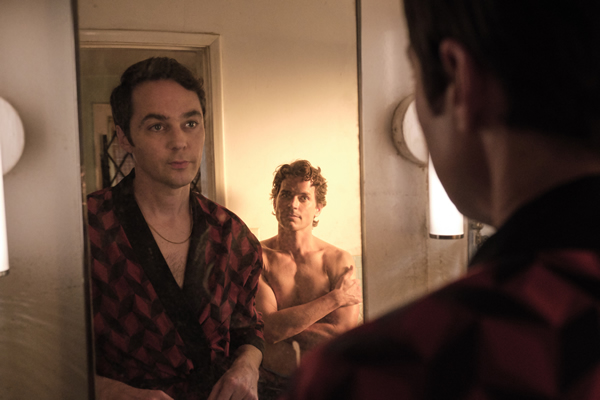
Movie theaters were closed but that only pushed the streaming rage further into the forefront of the entertainment ecosystem. And if there was any gay angle to it, there’s a good chance Ryan Murphy was involved.
The full cast of the 2018 Broadway debut of Mart Crowley (who died in March at age 84) classic “The Boys in the Band” reunited for a film version that debuted on Netflix in late September. The Blade called it a strong adaptation that “preserved in full” the “strength and dignity” of the source material. Murphy produced.
The seven-episode miniseries “Hollywood” debuted in March on Netflix with Patti LuPone helming this saga about a group of aspiring actors in filmmakers in post-WWII Tinseltown. Several gay characters and themes abounded including nods to Scotty Bowers and Rock Hudson among others. It drew mixed reviews but 12 Emmy nominations. Janet Mock directed two episodes. Murphy directed just one but was creator, executive producer, and writer.
And in December came “The Prom,” a Murphy-directed musical comedy based on the 2018 Broadway musical with Meryl Streep, James Corden and Nicole Kidman about Broadway actors who head to Indiana to fight a ruling that a high school prom is being cancelled because one female student wanted to take a girl as her date. Chaos ensues.
The Blade called it a “frothy mix that exists on the thin line between camp and hokum.”
And one you may have missed (again, with Murphy involvement) is “A Secret Love,” a documentary about Terry Donahue and her partner Pat Henschel who finally go public and get married after keeping their relationship a secret from their families for six decades.
3: Epic catfight

And then, of course, we had “Tiger King,” one of the increasingly rare shows that became a true cultural phenom.
The outrageous, seven-episode Netflix docuseries tells of zookeeper Joe Exotic (who sports a peroxide mullet) and his feud with Carole Baskin who accuses him of abusing and exploiting wild animals. Watched by 34.3 million people over its first 10 days of release, it’s been called “one of” Netflix’s most successful releases ever.
Adding to the color is Exotic’s unofficial same-sex throuplehood with Travis Maldonado and John Finlay and his relationship with future husband Dillon Passage.
He’s currently serving a 22-year prison sentence for, among other things, planning to have Baskin killed.
2: Cancel Ellen!
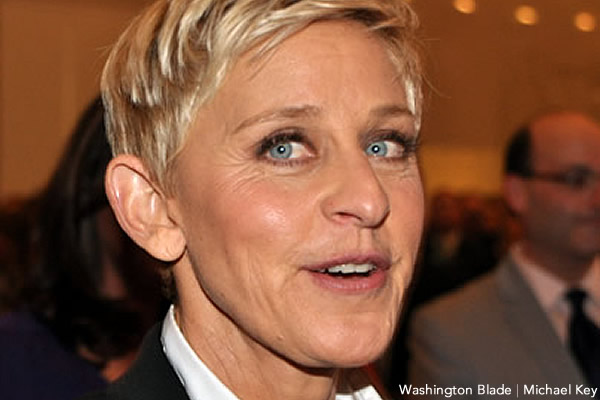
“The Ellen DeGeneres Show” was the subject of an internal third-party investigation by Warner Media after reports that the long-running hit daytime talk show was a toxic workplace behind the scenes.
In the spring, Variety reported on alleged mistreatment of long-time crew members and in July BuzzFeed published a report alleging racism and intimidation.
After delaying her 18th-season opener, DeGeneres, 62, addressed the situation in her opening monologue on Sept. 21. “I learned that things happened here that never should have happened,” she said. “I take that very seriously and I want to say I am sorry to the people who were affected.”
She acknowledged being in a “position of privilege and power.” People magazine, citing an unnamed source, said her perfectionist tendencies “ can be difficult. … She is looking at herself to make changes.”
She vowed to “start a new chapter” with the show’s 270 employees, People reports.
Following the internal investigation, in August DeGeneres apologized to her employees via video conference and confirmed that three top producers were leaving the show. The crew applauded.
DeGeneres said in December she would be back after the holidays after testing positive for COVID-19.
1: COVID disrupts
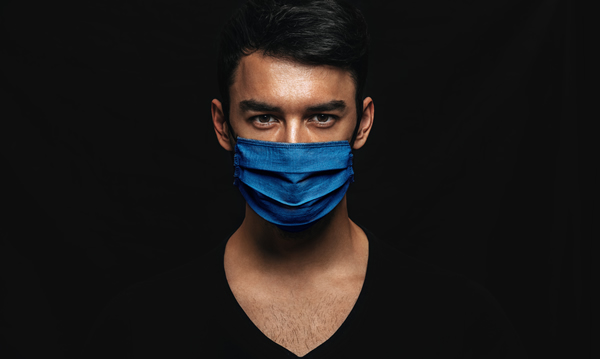
There wasn’t a single facet of the entertainment industry spared the disruptions related to COVID-19 pandemic restrictions from drag queens to touring musicians to theater producers and performers to the entire movie and TV industry, which soon ran out of “in the can” content to air or stream.
Although the competition part of “RuPaul’s Drag Race” season 12 was already taped and airing, the reunion and finale were taped — and cleverly edited — via Zoom.
Queer artists as diverse as Billy Gilman, Melissa Etheridge and the Indigo Girls offered living room concerts. Some were free, others moved to a subscription model.
With movie theaters closed for much of the year, release dates were bumped. Box office revenue reached lows not seen in 20 years and Cineworld, the world’s second-largest chain, closed in October. Many films that had planned theatrical releases were streamed instead and the bodies that govern the Golden Globes and the Oscars have made eligibility allowances. Perhaps the most prominent film to be postponed was “Wonder Woman 1984,” which will stream Dec. 25 on HBO Max, the same day it hits theaters in a move that has outraged some in the industry.
Some production units formed set bubbles in which cast and crew, subject to daily temperature checks and frequent COVID tests, quarantine from the outside world during shooting.
Resuming was a necessity and not just so people have stuff to watch coming through the pipeline. Colleen Bell, executive director of the California Film Commission, told NBC News the industry supports 700,000 jobs in California alone that accounts for $16 billion in wages.
a&e features
Visible and unapologetic: MAL brings the kink this weekend
Busy lineup includes dances, pups, super heroes, and more
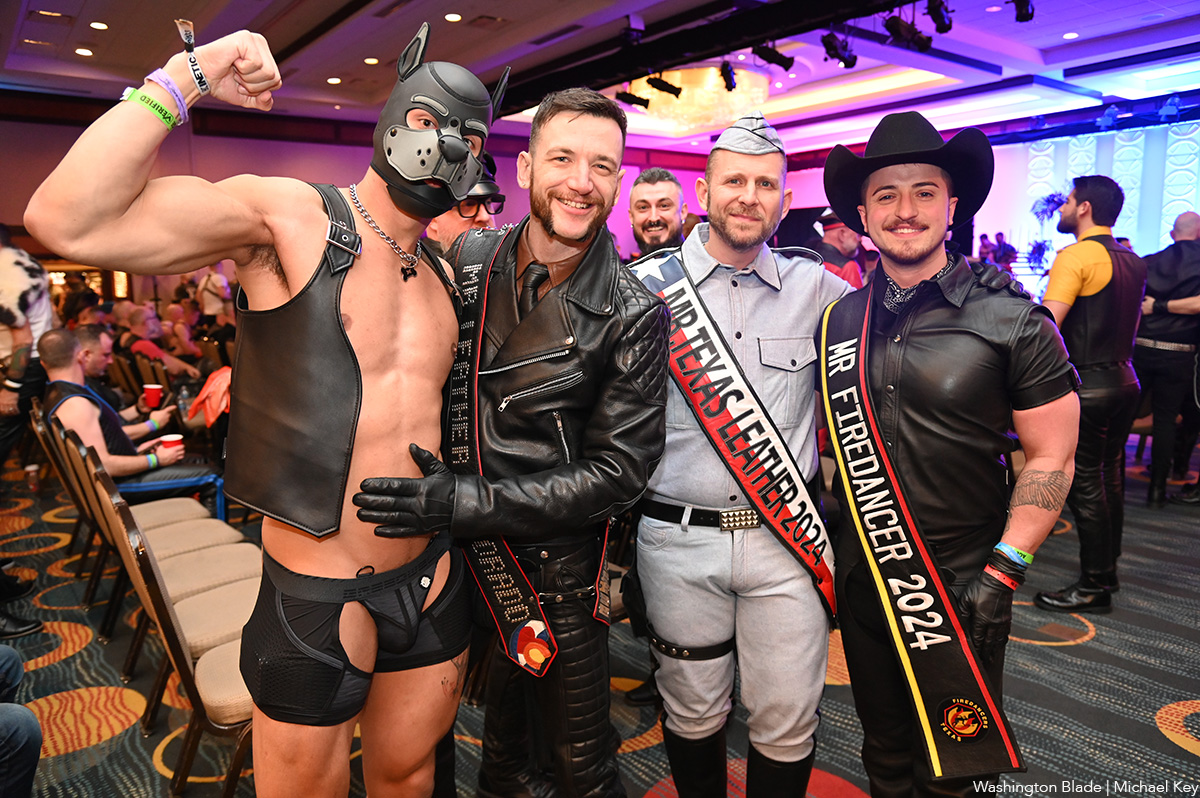
MLK Weekend in D.C. brings the annual Mid-Atlantic Leather (MAL) Weekend. Just a short walk from where Congress has been attacking queer Americans this year, MAL takes place at the Hyatt Regency Washington for several days of intrigue, excitement, leather, and kink.
The Centaur Motorcycle Club — one of several similar groups dedicated to leather in the country — has been hosting MAL in its current form for more than 40 years. Originally a small gathering of like-minded people interested in the leather lifestyle, MAL has grown to include a full four days of events, taking place onsite at the Hyatt Regency Washington (400 New Jersey Ave., N.W.). Select partner happenings take place each night, and many more non-affiliated events are scattered across the DMV in honor of and inspired by MAL.
MAL Weekend has become an internationally renowned event that celebrates fetish culture, yet it also raises funds for LGBTQ organizations, “reinforcing its legacy as both a cultural and philanthropic cornerstone of the global leather community,” according to MAL organizers.
During the day, MAL events at the Hyatt include workshops, social gatherings, shopping, and other in-person engagements for the community.
“The Hyatt underwent an extensive top to bottom renovation after last year’s event,” says Jeffrey LeGrand-Douglass, the event chair. The lobby, meeting spaces, guest rooms, and other areas have been updated, he notes, “so I am very excited for our guests to experience the new design and layout for the first time. And of course as with every year, we look forward to the contest on Sunday afternoon and seeing who will become our new Mr. MAL.”
In the evening, MAL hands the reins to partner KINETIC Presents, the D.C.-based nightlife production company. KINETIC will host four consecutive nights of high-production events that fuse cutting-edge music, immersive environments, and performance. This year, KINETIC is popping open doors to new-to-MAL venues, international collabs, play zones, and a diverse lineup.
According to KINETIC managing partner Zach Renovátes, 2026 is the most extensive MAL production to date. “The talent lineup is unreal: an all-star roster of international DJs, plus drag superstar performances at the Saturday main event,” he says.
Renovátes added that he’s “most excited about the collaborations happening all weekend — from bringing in MACHO from WE Party Madrid, to teaming up with local leather groups, to nonprofit partners, and Masc Diva [a queer nightlife collective].”
Official MAL events begin on Thursday with the Full Package/Three Day Pass Pick-Up from 5:30-8:30 p.m. at the Hyatt.
Thursday night is also the KINETIC kickoff party, called LUST. Running 10 p.m. – 3 a.m., it’s being held at District Eagle. DJ Jay Garcia holds it down on the first floor, while DJ Mitch Ferrino spins in the expansive upstairs. LUST features special performances from the performers including Serg Shepard, Arrow, Chase, and Masterpiece.
Renovátes notes that the LUST opening party at District Eagle coincides with the bar’s grand re-opening weekend. The bar will unveil its new permanent home on the renovated second floor. “it felt like the perfect place to start Mid-Atlantic Leather weekend — right in D.C.’s only dedicated home for kink communities,” he says.
After Thursday night, Friday is when daytime events begin at the Hyatt. The Exhibit Hall, on the ballroom level below the lobby, hosts upwards of 30 vendors, exhibitors, and booths with leather goods, fetish wear, clothes, toys, other accessories, providing hours of time to shop and connect with attendees and business owners. The Exhibit Hall will be open on Friday from 4-10 p.m., as well as on Saturday and Sunday afternoons.
DC Health is once again back at MAL, to provide preventative health services. In the past, DC Health has provided MPox vaccines, Doxy PEP, HIV testing, Narcan kits, and fentanyl test strips. This booth will be open on Friday 4-10 p.m.
Later, at 6 p.m., the Centaur MC is holding its welcome reception on the ballroom floor. After the Centaur’s Welcome Reception, the MIR Rubber Social is 8-11 p.m. A Recovery Meeting is scheduled at 10 p.m.
Many attendees enjoy visiting the guest room levels of the hotel. Note that to get in an elevator up to a hotel room, a staff member will check for a hotel room wristband. Non-registered guests can only access host hotel rooms if they are escorted by a registered guest with a valid wristband. Registered guests are permitted to escort only one non-registered guest at a time. Non-registered guests with a wristband who are already in the hotel before 10 p.m. may remain until midnight. However, non-registered guests without a wristband will not be admitted after registration closes.
Friday night, for the first time, KINETIC Presents is joining forces with WE Party to bring MACHO to Washington, D.C. This official MAL Friday event delivers two stages and two genres. On the UNCUT XXL stage, international Brazilian circuit superstars Erik Vilar and Anne Louise bring their signature high-energy sound. On the MACHO stage, Madrid’s Charly is joined by Chicago’s tech-house force, Karsten Sollors, for a blend of techno and tech house. UNCUT also features the XL Play Zone, a massive, immersive space exclusive to this event. The party takes place at the Berhta space from 10 p.m.-4 a.m..
“This year we’re bringing back the two-room format we debuted at WorldPride for both Friday and Saturday, so attendees can really tailor their experience — whether they’re in the mood for circuit or tech house.” says Renovátes.
Directly after Friday’s UNCUT XXL, UNDERWORLD Afters takes over District Eagle, from 3:30-8 a.m. International DJ Eliad Cohen commands the music.
Saturday, the Exhibit Hall opens earlier, at 11 a.m.. DC Health will also be back from 11 a.m. to 6 p.m.
Saturday is also time for one of the most anticipated events, the Puppy Mosh, running from 11 a.m. to 1 p.m. During the event, pup culture comes to life, when pups, handlers, and friends can enjoy an inclusive, safe pup zone. There is also a Recovery Meeting at 11 a.m., and the IML Judges Announcement takes place at noon.
The popular Super Hero Meet Up will be held 1:30 p.m. – 3 p.m., sponsored by One Magical Weekend, for cosplayers, comic enthusiasts, and their friends.
From 2-6 p.m., the Onyx Fashion Show will take place to showcase and highlight people of color in leather.
Finally, the Leather Cocktail Party – the original event of MAL – will be held 7-9 p.m. in the Ballroom. While this requires special tickets to attend, at 9 p.m. is the MAL cocktail party, which is open to wider attendees.
The last event of Saturday leaves the hotel, again a partnership with KINETIC. Kicking off at 10 p.m. and running until 4 a.m., it’s just the second time that KINETIC’s Saturday night party is an official MAL event and serves as the main weekend engagement.
Saturday night’s centerpiece is called KINK: Double Trouble. The night will feature a first-ever back-to-back set from international electronic music icons Nina Flowers and Alex Acosta on the Circuit/Tribal Stage. The other room – the Tech House Stage – curated by The Carry Nation and Rose, provides a darker, underground counterpoint, reinforcing the event’s musical depth and edge.
Beyond the DJs, KINETIC has called in the big shots for this party: “RuPaul’s Drag Race” legends Nymphia Wind and Plastique Tiara are set to headline. The party also takes place at Berhta.
Sunday, back at the hotel, there will be another Recovery Meeting at 10 a.m., and the Exhibit Hall opens again from 11 a.m.-5 p.m.
At 1 p.m., the anticipated and prestigious Mr. MAL Contest that celebrates the achievements of the leather community will be held in the Ballroom. This highly sought after title gives one man the power to become the Mid-Atlantic Leather man of the year. Sash and title winners must be (1) male, (2), a resident of North America, (3) At least 21 years of age; and (4) self-identify as gay. The first Mr. MAL was crowned in 1985. The Winner of Mr. MAL has the privilege of later competing in International Mr. Leather (IML) in Chicago on Memorial Day Weekend 2025.
From 4 p.m. to 12 a.m., MAL will hold its Game Night for the gaymers in attendance. There will also be a special screening of A24’s new film, “Pillion,” about a man who is swept off his feet when an enigmatic, impossibly handsome biker takes him on as his submissive.
Sunday closes with a community partner event produced by Masc Diva, featuring Horse Meat Disco with support from Coach Chris, at A.I. Warehouse in the Union Market district. It’s the same team that produced HMD during WorldPride at A.I. Warehouse.
Note that there are several types of passes for attendance to the hotel and parties. KINK VIP Weekend Passes include express entry, VIP areas, and enhanced amenities throughout the weekend, while MAL Full Weekend Package holders receive access to the official Sunday closing event.
At last year’s MAL events, KINETIC Presents raised more $150,000 for LGBTQ charities, and expects to match or exceed that impact in 2026.
Renovátes stated that “now more than ever, it’s important to create safe, affirming spaces for our community — but it’s just as important to be visible and unapologetic. We want to make it clear that the LGBTQ+ and leather communities aren’t going anywhere. We’ve fought too long and too hard to ever feel like we have to shrink ourselves again, no matter what the political climate looks like.”
In addition to the KINETIC events, various LGBTQ bars will hold parties celebrating the theme of the weekend. For example, Kiki, located on U Street NW, is hosting a party called KINKI, hosted by DJ Dez, on Saturday night. Sister bar Shakiki, on 9th Street NW, is hosting a party called Railed Out, a fetish-inspired party that features a play zone, on Thursday night. Flash, on U Street NW, will hold its infamous Flashy Sunday party to close out the weekend.
a&e features
Queer highlights of the 2026 Critics Choice Awards: Aunt Gladys, that ‘Heated Rivalry’ shoutout and more
Amy Madigan’s win in the supporting actress category puts her in serious contention to win the Oscar for ‘Weapons’

From Chelsea Handler shouting out Heated Rivalry in her opening monologue to Amy Madigan proving that horror performances can (and should) be taken seriously, the Critics Choice Awards provided plenty of iconic moments for queer movie fans to celebrate on the long road to Oscar night.
Handler kicked off the ceremony by recapping the biggest moments in pop culture last year, from Wicked: For Good to Sinners. She also made room to joke about the surprise hit TV sensation on everyone’s minds: “Shoutout to Heated Rivalry. Everyone loves it! Gay men love it, women love it, straight men who say they aren’t gay but work out at Equinox love it!”
The back-to-back wins for Jacob Elordi in Frankenstein and Amy Madigan in Weapons are notable, given the horror bias that awards voters typically have. Aunt Gladys instantly became a pop culture phenomenon within the LGBTQ+ community when Zach Cregger’s hit horror comedy released in August, but the thought that Madigan could be a serious awards contender for such a fun, out-there performance seemed improbable to most months ago. Now, considering the sheer amount of critics’ attention she’s received over the past month, there’s no denying she’s in the running for the Oscar.
“I really wasn’t expecting all of this because I thought people would like the movie, and I thought people would dig Gladys, but you love Gladys! I mean, it’s crazy,” Madigan said during her acceptance speech. “I get [sent] makeup tutorials and paintings. I even got one weird thing about how she’s a sex icon also, which I didn’t go too deep into that one.”
Over on the TV side, Rhea Seehorn won in the incredibly competitive best actress in a drama series category for her acclaimed performance as Carol in Pluribus, beating out the likes of Emmy winner Britt Lower for Severance, Carrie Coon for The White Lotus, and Bella Ramsey for The Last of Us. Pluribus, which was created by Breaking Bad’s showrunner Vince Gilligan, has been celebrated by audiences for its rich exploration of queer trauma and conversion therapy.
Jean Smart was Hack’s only win of the night, as Hannah Einbinder couldn’t repeat her Emmy victory in the supporting actress in a comedy series category against Janelle James, who nabbed a trophy for Abbott Elementary. Hacks lost the best comedy series award to The Studio, as it did at the Emmys in September. And in the limited series category, Erin Doherty repeated her Emmy success in supporting actress, joining in yet another Adolescence awards sweep.
As Oscar fans speculate on what these Critics Choice wins mean for future ceremonies, we have next week’s Golden Globes ceremony to look forward to on Jan. 11.
a&e features
Looking back at the 10 biggest A&E stories of 2025
‘Wicked,’ Lady Gaga’s new era, ‘Sexy’ Bailey and more

Although 2025 was a year marked by countless attacks on trans rights and political setbacks, the year also saw brilliant queer artists continuing to create art. From Cannes and Sundance Award winners now vying for Oscar consideration to pop icons entering new stages of their careers, queer people persevered to tell their stories through different media.
With the state of the world so uncertain, perhaps there’s no more vital time to celebrate our wins, as seen through some of this year’s top pop culture moments. While there’s no collection of 10 stories that fully encompass “the most important” news, here are some events that got the gays going:
10. ‘Mysterious Gaze of the Flamingo’ wins big at Cannes

The Cannes Film Festival has become a crucial start for films hoping to make their way to the Oscars, and first-time director Diego Céspedes won the top Un Certain Regard prize for his intimate western “The Mysterious Gaze of the Flamingo.” The film is set in the ‘80s and is intended as an allegory for the AIDS epidemic. Seeing a film that unpacks vital queer history win one of the most coveted awards at Cannes has been a huge point of pride in the independent filmmaking community.
Since the film bowed at Cannes, it has been selected as Chile’s Oscar entry in the Best International Feature race. Speaking with The Blade during the film’s AFI Fest run in October, Céspedes said: At first, I was kind of scared to have this campaign position in the times that we’re living [in] here. But at the same time, I think the Oscars mean a huge platform — a huge platform for art and politics.”
9. ‘The Last of Us’ returns for an even gayer season 2
While the first season of The Last of Us gave us one of TV’s most heartbreaking queer love stories in the episode “Long, Long Time,” Season 2 doubled down on its commitment to queer storytelling with the blossoming relationship between Ellie (Bella Ramsey) and Dina (Isabela Merced). The show expanded on the pair’s relationship in the original video game, making it perhaps the central dynamic to the entire season. That unfortunately came with more homophobic backlash on the internet, but those who checked out all the episodes saw a tender relationship form amid the show’s post-apocalyptic, often violent backdrop. For their performance, Ramsey was once again nominated for an Emmy, but Merced deserved just as much awards attention.
8. ‘Emilia Pérez’ sparks controversy
Jacques Audiard’s genre-bending trans musical “Emilia Pérez” proved to be an awards season juggernaut this time last year, winning the Golden Globe for Best Musical/Comedy. But when the lead star Karla Sofia Gascón’s racist, sexist, and homophobic old tweets resurfaced, the film’s Oscar campaign became a tough sell, especially after Netflix had tried so hard to sell Emilia Pérez as the “progressive” film to vote for. Mind you, the film had already received significant backlash from LGBTQ+ audiences and the Mexican community for its stereotypical and reductive portrayals, but the Gascón controversy made what was originally just social media backlash impossible to ignore. The only person who seemed to come out of the whole debacle unscathed was Zoe Saldaña, who won the Oscar for Best Supporting Actress over Ariana Grande.
7. ‘Sorry, Baby’ establishes Eva Victor as major talent
Back in January at the Sundance Film Festival, Eva Victor (known by many for her brand of sketch comedy) premiered their directorial debut “Sorry, Baby” to rave reviews, even winning the Waldo Salt Screening Award. Victor shadowed Jane Schoenbrun on the set of “I Saw the TV Glow,” and seeing Victor come into their own and establish such a strong voice immediately made them one of independent cinema’s most exciting new voices. A memorable scene in the film sees the main character, Agnes (played by Victor), struggling to check a box for male or female, just one example of how naturally queerness is woven into the fabric of the story.
Most recently, Victor was nominated for a Golden Globe for her performance in the film, and she’s represented in a category alongside Jennifer Lawrence (“Die My Love”), Jessie Buckley (“Hamnet”), Julia Roberts (“After the Hunt”), Renate Reinsve (“Sentimental Value”) and Tessa Thompson (“Hedda”). The film also received four Independent Spirit Award nominations overall.
6. Paul Reubens comes out in posthumous doc

While Paul Reubens never publicly came out as gay before passing away in 2023, the two-part documentary “Pee-wee as Himself” premiered back in May on HBO Max, giving the legendary comedian a chance to posthumously open up to the world. Directed by Matt Wolf, the documentary explores how Reubens found his alter ego Pee-Wee Herman and why he kept his private life private.
The documentary won an Emmy in the Outstanding Documentary or Nonfiction Special category and remains one of the most critically acclaimed titles of the year with a 100% Rotten Tomatoes score. Also worth noting, the National Geographic documentary Sally told the posthumous coming out story of Sally Ride through the help of her long-time partner, Tam O’Shaughnessy.
5. Lady Gaga releases ‘Mayhem’
Lady Gaga entered a new phase of her musical career with the release of Mayhem, her seventh album to date. From the frenzy-inducing pop hit Abracadabra to the memorable Bruno Mars duet featured on “Die With a Smile,” seeing Gaga return to her roots and make an album for the most die-hard of fans was especially rewarding after the underwhelming film releases of “House of Gucci” and “Joker: Folie à Deux.” Gaga has been touring with The Mayhem Ball since July, her first arena tour since 2018. She even extended her tour into 2026 with more North American dates, so the party isn’t stopping anytime soon. And Gaga is even set to make an appearance next May in “The Devil Wears Prada 2.”
4. Cynthia Erivo, Ariana Grande perform at the Oscars

While “Wicked: For Good” didn’t quite reach the heights of the first film, we will forever have Cynthia Erivo and Ariana Grande’s breathtaking live performance that opened the 97th Academy Awards. The pair sang a rendition of “Over the Rainbow,” “Home,” and “Defying Gravity,” paying proper homage to the original 1939 “Wizard of Oz.” Even non-Wicked fans can’t deny how magical and brilliantly staged this performance was. With both Erivo and Grande up for acting Oscars last year, they’re hoping to repeat success and make history with consecutive nominations. Either way, let’s hope there’s another live performance in the making, especially with two new original songs (The Girl in the Bubble and No Place Like Home) in the mix.
3. Indya Moore speaks out against Ryan Murphy
Indya Moore has consistently used social media as a platform for activism, and in September, posted a 30-minute Instagram live speaking out against “Pose” co-creator Ryan Murphy. Moore claimed that Murphy wasn’t being a true activist for trans people. “Ryan Murphy, we need you to do more. You need to address the racism, the violence, and the targeting of people on your productions, Ryan Murphy. You do need to make sure trans people are paid equally. Yes, Janet did the right thing,” Moore said. Murphy was also back in the headlines this year for the critically panned “All’s Fair” and the controversial “Monster: The Ed Gein Story” starring Laurie Metcalf and Charlie Hunnam.
2. Cole Escola wins Tony for Best Leading Actor
Few pop culture moments this year brought us together more than Cole Escola winning a Tony award for “Oh, Mary!” the Broadway show they created, wrote and starred in (we love a triple threat!) Escola made history by becoming the first nonbinary person to win a Tony in the leading actor category, and seeing them excitedly rush to the stage wearing a Bernadette Peters-inspired gown instantly became a viral social media moment.
The cherry on top of Escola’s major moment is the recent news that they are writing a Miss Piggy movie with Jennifer Lawrence and Emma Stone producing — news that also broke the internet for the better. We cannot wait!
1. Jonathan Bailey makes gay history as ‘Sexiest Man Alive’

The same year as his on-screen roles in blockbusters “Jurassic World Rebirth” and “Wicked: For Good,” Jonathan Bailey made history as the first openly gay man to be named People magazine’s “Sexiest Man Alive.” The fact that it took 40 years for an openly gay man to earn the title is a signifier of how far we still have to go with queer representation, and seeing Bailey celebrated is just one small step in the right direction.
“There’s so many people that want to do brilliant stuff who feel like they can’t,” he told PEOPLE, “and I know the LGBT sector is under immense threat at the moment. So it’s been amazing to meet people who have the expertise and see potential that I could have only dreamed of.” In 2024, Bailey founded the charity titled The Shameless Fund, which raises money for LGBTQ+ organizations.
-

 Colombia5 days ago
Colombia5 days agoGay Venezuelan opposition leader: Country’s future uncertain after Maduro ouster
-

 Opinions5 days ago
Opinions5 days agoDo not forget that Renee Good was queer
-

 Florida5 days ago
Florida5 days agoDNC slams White House for slashing Fla. AIDS funding
-

 Virginia4 days ago
Virginia4 days agoVa. Senate approves referendum to repeal marriage amendment














